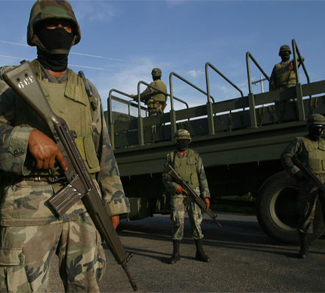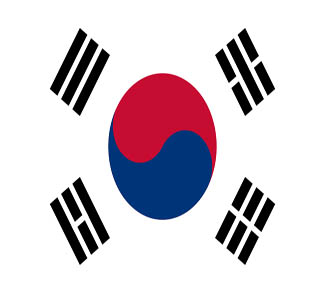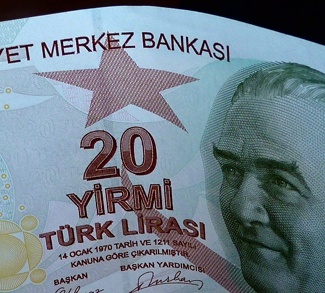In a previous Geopolitical Monitor analysis on Mexico’s bloody drug wars, we explained the existential logic that forces the government’s actions against the powerful trafficking cartels: By 2006 the Mexican state was facing the very real prospect of degenerating into functional irrelevance as a result of the increasing power and audacity of the criminal organizations. Governmental power, which must include the monopoly on the use of force, control of national territory, and the allegiance of public servants, was on the verge of disintegrating, giving rise to credible speculation that America’s giant southern neighbor might be dangerously close to state failure. By 2013, the government has dealt crucially damaging blows to certain cartels, including capturing or killing twenty-five of the top thirty-seven kingpins, yet it is arguably no closer to humbling them to desired levels, that is, of dismantling the vast resources and territory they control, and curbing their lethal, state-threatening potential.
With the return to power of the once omnipotent Institutional Revolutionary Party (PRI) in the person of President Enrique Peña Nieto, there has been widespread speculation that a certain accommodation with the cartels is in order, in essence, a return to the relatively peaceful status quo ante that existed during the seven decades of unquestioned PRI rule. During the election, this speculation, publicly whispered by PRI partisans in favor and PAN loyalists against, yielded significant returns to the popularity of Peña Nieto, as the 50,000 plus death toll kept on rising.
This being said, any possible return to the old Pax Mafiosa between the government and the cartels is absolutely impossible at the moment, and the PRI will be forced to wage the PAN’s war until the objectives of the war are met, however ambiguous the objectives may be. The PRI’s incentives for fighting the cartels are as pressing as those of the PAN, primarily because the decision to wage the war was decided not on ideological grounds, but on the more critical imperative of state survival.
The Mexican state is fighting powerful and multiple atypical insurgencies, armed with virtually unlimited access to firearms, including anti-aircraft batteries, and funded by an export trade in illegal narcotics worth billions of dollars.
Labeling the Mexican Drug War an insurgency is not merely a question of semantics, but of concrete and very controversial political considerations. In Mexico it means labeling groups that the government has been endlessly demonizing using a term once reserved for heroes of the country’s past; it means further hurting Mexico’s embattled tourism industry. Using it in the United States implies seeing Mexico as posing a potentially tremendous threat to national security. Still, former Secretary of State Hillary Clinton applied it to Mexico, though the Obama administration has not kept the designation. A typical objection to the labeling of the drug cartels as insurgencies has been made by think-tanks and the academic community, and it contends that the cartels are fighting for a sort of entrepreneurial independence, and not for political power or much less for ideological reasons. This position, though, is ignorant of the history of the drug movement in Mexico before President Calderon began the government’s assault, and this view is absolutely incapable of perceiving the essence of the aims of the cartels in the current war.
It is true that the insurgents are not motivated by ideology, but they are indeed motivated by power, and political power, albeit a nuanced and highly “Mexican” version of it. An insurgency need not be fought along ideological fault-lines, but it is always political, and there is nothing more political than wanting to pummel a country’s government into submission and therefore make it complicit in the massive northward flow of illegal narcotics. The cartels pay off government functionaries and hire them as “lookouts”; they corrupt local and state police forces, oftentimes recruiting active officers and use them in operations; they mobilize bribed police chiefs against rival cartels; they seek to shape public opinion against the government’s efforts by perpetrating acts of terrorism against civilians; they practice media censorship by threatening and murdering journalists, and effectively giving permission to print certain stories and not others; they wage war against each other endlessly, with no concern for commerce or the authority of the state. If this were not an insurgency, then few armed conflicts today would be. In a graphic example of total local cartel usurpation of power in 2009, the La Familia Cartel launched an attack against federal police forces in Michoacán, and the vehicles used in the assault against the federales came from the local police force! The Mexican state, especially at the regional and local levels, was increasingly becoming a “captive state.”
We will briefly profile two of Mexico’s most powerful drug cartels, and thus show in clear relief the colossal predicament the Mexican state is in. There are two main groups to which most of the others have allied themselves, and so they can be considered to be representative of the entire insurgent phenomenon in Mexico.
Sinaloa, the “Sicily of the Americas”
The story of the Sinaloa Cartel is the story of drug trafficking in Mexico. During colonial times the region was infamous for its cannibalistic inhabitants, and to this day it remains one of the most lawless regions of the Mexican Republic. Long before cocaine came into the picture, farmers in Sinaloa’s Golden Triangle were growing poppies for opium sold in the United States, a smuggling trade first exploited by Chinese-Mexicans. Sinaloans managed to wrestle the poppy trade from the Chinese through a rough program of ethnic cleansing in the 1930s, killing or expelling them from the state.
But the Sinaloa Cartel, as we know it today, hails back to 1987, when, in a move reminiscent of Alexander the Great dividing his kingdom, Miguel Angel Felix Gallardo, alias “El Padrino” (“The Godfather”), in a council of the Mexican crime families in the port of Acapulco, partitioned his empire, disintegrating the once grand Guadalajara Cartel and “privatizing” the trade amongst his lieutenants.
The Sinaloa Cartel, back then called the Cartel of the Pacific, came under the joint leadership of Ismael Zambada Garcia, alias “El Mayo,” and, more importantly, Joaquin Guzman Loera, alias “El Chapo” (“The Shorty”), the current and only head of the cartel, and now that Osama bin Laden is dead, the most wanted man in the world. Of all the cartels in Mexico, none is as identified with its leader as Sinaloa, formerly called the “Alianza de Sangre” (“Blood Alliance”). A larger-than-life personality, “El Chapo” is idolized in his native Sinaloa and beyond as a Mexican Robin Hood of mythological proportions, where ballads are dedicated to his exploits, and songs narrate his “benevolence” towards “his people”—and his relentless fury towards his enemies. His appearances are legendary, he is nowhere and everywhere, and his very name has become an iconic symbol of social mobility, resistance, and national pride, as he has endlessly eluded American anti-drug investigators. Everything the man does, or that his loyalists say he does, is intentionally clouded in the mists of war, making tracking his ambitions nigh on impossible. Heralded by Forbes Magazine as possessing a personal fortune of one billion dollars, “El Chapo’s” Sinaloa Cartel employs close to one million people, and directly controls over 25,000 miles of drug territory, including virtually the entire states of Sinaloa, Baja California, Sonora, Durango, and Chihuahua, and has active and significant operations in 12 other states. The long-arm of “El Chapo” is seen throughout Central and South America, and smuggling operations has extended Sinaloa’s empire to the far-off corners of Australia—and the United States, with a base of operations in Atlanta. Sinaloa is larger and grander than anything the Medellin Cartel of Colombia ever came close to being.
Sinaloa, one could say, is Mexican drug trafficking in the “old school” tradition. Unlike other cartels, it has, for the most part, limited its activities to traditional drug smuggling, and prefers to bribe government officials and police rather than killing them. Ever eyeing the long-term benefit of the cartel, Sinaloa has a vast and sophisticated intelligence apparatus that recruits young officials and functionaries at the beginning of their careers, often helping them financially, and “clearing away” any obstacles to promotions. Suffice it to say, “El Chapo’s” arrest could implicate and tarnish untold numbers of Mexican public servants. In other words, loyalty is valued more than fear, a trait that has entrenched the cartel in all levels of society. Consistent with this is the cartel’s relatively less violent nature, which bodes well for its long-term survival. “El Chapo’s” supporters have heralded his opposition to the random slaughters that his rival cartels inflict upon civilian populations, and have appealed to the government to join forces with him to destroy them. A prominent “narco-ballad” performed by El Grupo Cartel has made this appeal famous, and in a society that values its antique minstrel tradition, it has had a significant impact upon the Sinaloa Cartel’s public image. Sinaloa is further credited with fighting one of its rivals, the Tijuana Cartel, into a non-aggression pact, which contributed to lessening the violence in that crucial border city in 2010.
Sinaloa is seen as the most sober of the cartels, and it is also the largest. This is not to say that it doesn’t commit acts of brutal violence; but it is true that its modus operandi is more geared towards bribery. Its views are towards the future, and consequently it cares very much about its public image, exploiting to the fullest the Mexican people’s rather grandiose perception of outlaws and natural distrust of government, along with their respect for the cartel’s idiosyncratic and violent cowboy intrepidness. Image is carefully kept, and this becomes a potent tool against Sinaloa’s most powerful enemies, the Zetas, with which it has been fighting a relentless and bloody war for years.
Los Zetas: A profile in Overkill
If Sinaloa is the “godfather” of the cartels, traditional, highly Mexican, folkloric and historically deferential to more “respectable” parameters of narco action, their primary enemies, the Zetas, are the marauding Huns by comparison. Possessing more tactical capabilities in the United States than Al Qaeda, and more absolute power over their territories than terrorist organizations like ETA or the IRA, they are a phenomenon seemingly taken from kitsch cinema portrayals of aesthetically grand acts of over-kill violence: Tarantino characters on steroids! In Mexico they parade their power by patrolling their territory in convoys of 20 to 30 armored, tinted trucks, flaunting their impunity before a besieged populace—more daring than any other criminal cartel, and more akin to the textbook notion of armed insurgency.
Whilst not as driven by personality and regional allegiance, the Zetas are driven more by an extreme type of corporate loyalty, perfecting a fanatical code of silence born out of their intense, militaristic training. The group was created as the enforcement force of the Gulf Cartel in 1999, recruited from deserters from Mexican Army Special Forces, frighteningly well trained in counterinsurgency tactics by elements of the U.S. intelligence community and even by Sayeret Matkal units from Israel. When Gulf Cartel leader Osiel Cardenas was extradited to the U.S. in 2007, the Zetas began pronouncing more and more their functional independence, departing from Gulf Cartel protocols, until they finally broke away from the cartel in 2010, declaring war on their former bosses. Since then the Gulf has aligned itself with Sinaloa against the Zetas, thereby creating the line in the sand that persists to this day in the cartel versus cartel dynamic.
Recruits are routinely chosen amongst very young Mexican and Mexican-American adolescents—sometimes as young as 13—are initiated by the ritualized execution of a prisoner at point-blank range, and are then sent to a training camp at a ranch or an estate somewhere in Mexico. There they are trained in the use of virtually all types of guerrilla tactic firearms, including grenade launchers, anti-aircraft guns, bazookas, and improvised explosive devices. To solidify the young trainees’ tolerance to torture, they are subjected to brutal sessions of beatings and burnings, sometimes even their fingernails and ears are torn off, all to psychologically condition them to hold their tongue should they get caught by a rival cartel or the government.
Most visible in the United States at Laredo, Texas, they are fighting a crucial war against the Sinaloa Cartel over control of the I-35 corridor, a fight based in Nuevo Laredo, Tamaulipas—the Zetas base of transnational operations in North America, with operations that routinely reach Canada. In Mexico they control 11 states, the southern territories, and their power spills over to Guatemala, where they have a significant recruitment presence. Unlike the other cartels, drug smuggling accounts for approximately only 50% of Zeta income, the rest coming from kidnappings, extortion, protection rackets, assassinations, human trafficking, amongst other illegal activity.
The Zetas have become quite dexterous in media manipulation tactics and outright censorship, often brutally murdering journalists and attaching messages to the mangled corpses. Attacks against civilians are a common tactic of terror to cower public opinion, especially in the Nuevo Laredo area, where the message for the government to stand back is mind-shatteringly clear. An often cited execution procedure for a “serious enemy” of the cartel is called “el guiso”—“the stew”—where the victim is placed in a 55-gallon drum, often filled with diesel as opposed to gasoline, because diesel burns slower. Then the drum is set alight, and after four to eight hours, depending on his/her size, all that remains of the victim is a fragile, charred cluster of bones later to be picked up by authorities aghast at the crime scene. Victims have been dissolved in acid and have been fed to wild animals, amongst many other forms of extravagant murder and torture.
Their macabre public image includes a pietistic devotion to “La Santa Muerte” (“Holy Death”), an idol of a skeletal female grim-reaper, usually garbed in women’s dresses, to which devotees pay homage of fruits, animal bones, and even human deaths. The Catholic Church in Mexico has condemned the homage of “La Santa Muerte” as satanic idolatry, warning that anyone who worships the image falls into grievous mortal sin. The votaries of the death cult, however, have despaired of traditional Catholicism’s consolation because of the proscription on murder, and they hope “Santa Muerte” will shield them from God’s wrath at their death. Altars to death pervade Nuevo Laredo’s streets, grim reminders of the devotion of the city’s rulers.
There have been cases of hits ordered against American citizens—orders given by Zeta commanders in Mexico, and executed in the United States. Though it is usually gang on gang killings in the U.S., the scenario could very well broaden to include police chiefs or even politicians. Authorities estimate that there are sleeper cells of Zeta hit-men in cities all across the United States, and they are infiltrating American street gangs, including the Latin Kings and MS-13, bringing these gangbangers closer to a more lethal and previously undreamed of level of professional sophistication. It is primarily through these gangs that they distribute their merchandise in America.
A Corrupt State is NOT a “Captive State”: A Conclusion
The state’s interest lies in diminishing the immense power of the criminal cartels, even if a truce or “agreement” is later on the agenda. The state, in order to properly function as such, and interestingly enough, in order to reap any benefit from such a truce, needs to show a preponderance of power. It needs to show that it is the state that allows any organization to live and prosper, and that without the state they are nothing—for that is what distinguishes a corrupt state from a “captive state.” A corrupt state can function; a “captive state” is far too erratic. Such was the agreement during the PRI’s “perfect dictatorship,” when the PRI occasionally flexed its muscle against the cartels as well, and the cartels showed a sort of respectful deference. Such was the power of the PRI, and such was the deference of the cartels, that in 1989 President Carlos Salinas de Gortari arrested Mexican “Godfather” Miguel Angel Felix Gallardo, the then unquestioned and sole drug lord, without firing a shot, while the latter was sitting quietly in a Guadalajara restaurant! How things have changed.




